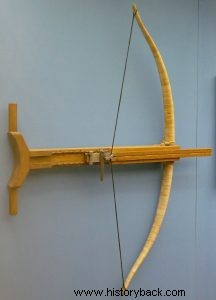
At the beginning of the 4th century BC. the Greeks of Sicily were fighting once more against their ancient rivals, the Carthaginians. Dionysius of Syracuse, this time wished to prepare the Greek forces as best as possible. But in addition to the classic weapons, the engineers of Dionysius invented a new weapon, the catapult.
Its inventor was probably the famous general and engineer Archytas Tarantinos, who also built the world's first flying machine. "And the catapult was found at this time in Syracuse, as if the state craftsmen were gathered everywhere in one place" (And catapults were indeed invented at that time in Syracuse, because the best craftsmen had gathered there from everywhere), says Diodorus the Sicilian. But what was the catapult?
As its name testifies, the catapult was a powerful war machine, capable of penetrating the opponents' shields (the pelts). In its first form it was an anti-personnel weapon, designed specifically against dense flanks. The first catapults were of simple design and construction.
They were called gastrafetes because their operator supported them on his stomach (stomach) during reloading, perhaps also during shooting. Gastrafetes were actually nothing more than large crossbows (crossbows), almost identical to their medieval counterparts. The archer shot a large arrow, with great speed and therefore piercing ability.
Its combat range was satisfactory for the time and exceeded 200 meters. At the same time, Dionysius ordered the construction of multi-story siege towers, equipped with bridges and catapults, but also larger and more powerful warships, quadrilaterals and pentarilaterals.
When everything was ready, Dionysius moved, in 397 BC, at the head of 80,000 infantry, 3,000 cavalry and for the first time in history hundreds of war machines against Motya, the main base of the Carthaginians in Sicily. The Greeks began the siege of Motya by raising a rampart. But before they completed the work, Carthaginian reinforcements arrived in the city - 100 ships under Imilkona.
But Dionysius manned the ships with many archers and slingers and threw his catapults on the shore . Thus the attack of the Carthaginians was easily repulsed, as the arrows of the catapults shattered the opponents and as Diodorus the Sicilian recounts, "this arrow was a great surprise because it was first found at that time".
So the sharp gastraphetes and the surprise they caused to the Carthaginians gave the victory to the Greeks and forced Imilkon to withdraw. Dionysius then used catapults against the walls, but also his six-story siege towers, which were probably also equipped with rams, as Diodorus suggests.
Finally the Greeks' machines succeeded in creating a breach in the wall and entered the city. Its defenders, together with the inhabitants, retreated into the city and fortified themselves in the houses. Then Dionysius ordered the entry of the towers into the city. The towers were drawn in.
The Greeks placed them in front of the fortified houses and threw the wooden bridges on their roofs. In this way, they invaded the houses from above and finally, after a fierce overnight conflict, the city was captured.
It is worth noting that Dionysius crucified all the Greek mercenaries of the Carthaginians whom he captured on charges of treason...

Gastrafetis

Carthaginian hoplites
